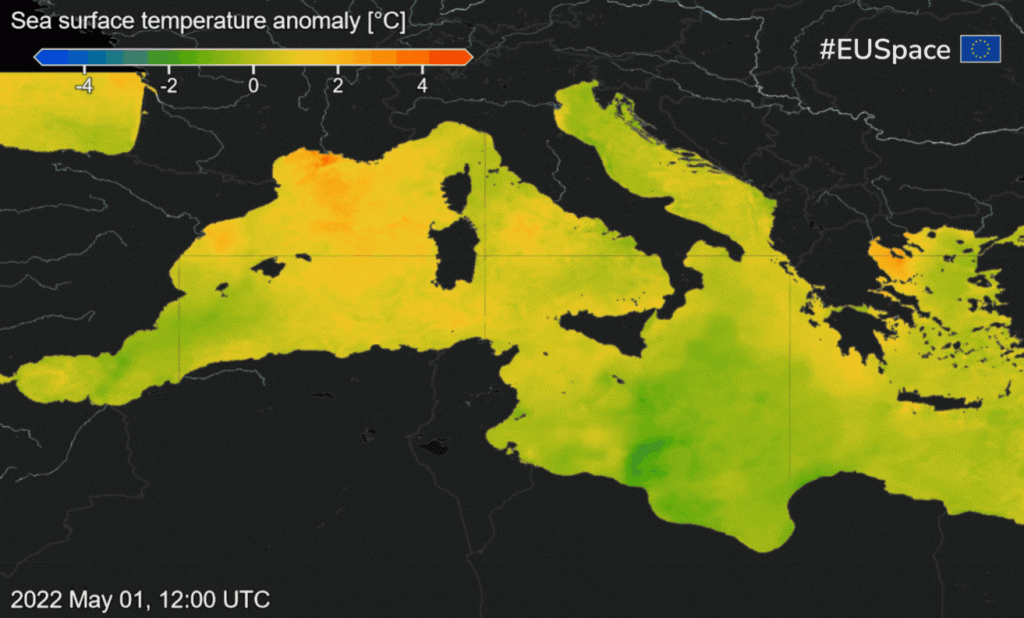Is the Mediterranean becoming too hot to handle?

The Mediterranean is in hot water – and we don’t mean that figuratively.
According to Copernicus data, last summer was a particularly hot one for the Mediterranean. Not only did the entire region see record-breaking marine heat waves in terms of intensity, duration and area of impact, the western Med experienced at least one marine heat wave every month between May and August – something that’s never been seen before.
A marine heat wave (MHW) is an extreme rise in ocean temperature that last for an extended period. Due to global warming, both the magnitude and frequency of MHWs have been increasing in recent years. This is because the global ocean absorbs 90% of the excess heat produced by anthropogenic activities (e.g., human-caused pollution and greenhouse gas emissions). Once in the ocean, this heat doesn’t disappear. Instead, it is carried via currents around the world, triggering MHWs and melting sea ice and ice shelves as it goes.
Using numerical modelling and Earth Observation images, including those provided by Copernicus, oceanographers with the Copernicus Marine Service (CMEMS) forecast that MHW intensity, frequency and scope will only continue to increase. This is particularly worrisome for regions like the Mediterranean as MHWs can trigger floods, extreme heatwaves and cyclones, often with devastating consequences for marine ecosystems, industries and society – all of which highlights the need to take immediate action against climate change.
Here too, Copernicus can help.
Turning climate data into climate action
By developing new markets and applications for Copernicus, EUSPA helps turn climate data into climate action. As a result, decisionmakers can use Copernicus data to better adapt to the realities of climate change. This includes developing plans that can be triggered when specific heat stress conditions are forecasted. Such action plans can include things as simple as limiting outside activities and drinking plenty of fluids to actively monitoring at risk populations.
In the near future, city planners could use this same information to better adapt cities, buildings and green spaces to heat-related risks, making cities more pleasant to live in – even in a hotter world. This is exactly what the project 100KTREEs aims at, to plant more trees in cities to become climate resilient and heatwaves proof.
Read more: Using Copernicus data to climate-proof cities
Want to learn more about how Copernicus data can benefit climate adaptation strategies? Then be sure to join EUSPA on 25 September for a dedicated workshop on Copernicus and Climate Adaptation.
The workshop will review challenges and opportunities for climate adaptation across Copernicus, Earth observation and the policy landscape. It will also include a stakeholder engagement on climate adaptation and urban areas as part of the Knowledge Centre on Earth Observation (KCEO) deep dive on the subject.
The hybrid event will be held live in Brussels and online.
Media note: This feature can be republished without charge provided the European Union Agency for the Space Programme (EUSPA) is acknowledged as the source at the top or the bottom of the story. You must request permission before you use any of the photographs on the site. If you republish, we would be grateful if you could link back to the EUSPA website (http://www.euspa.europa.eu).